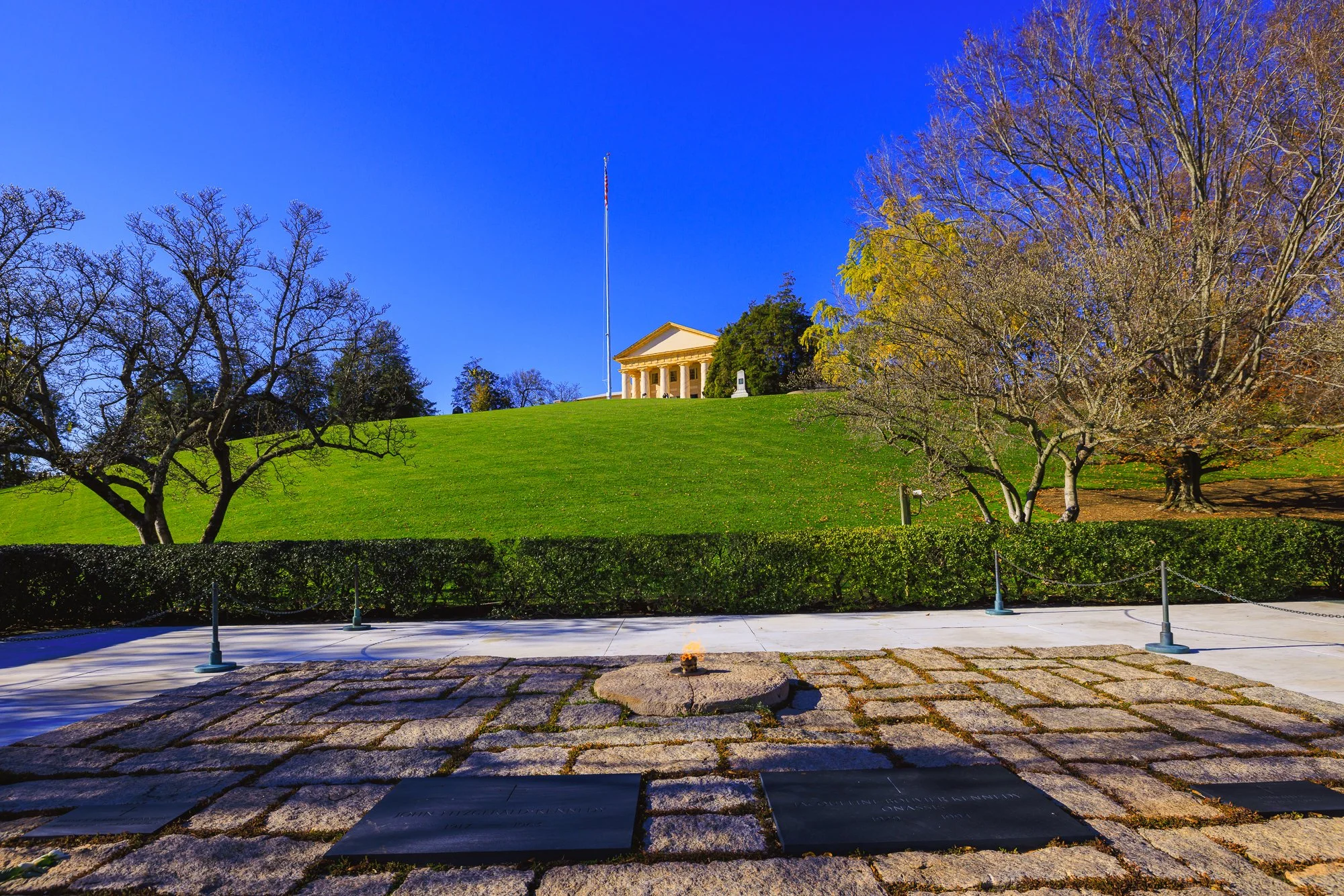Arc de Triomphe, Paris
Arc de triomphe de l'Étoile, Paris - © David H. Enzel, 2023
The Arc de Triomphe de l'Étoile stands at the western end of the Champs-Élysées at the center of Place Charles de Gaulle, formerly named Place de l'Étoile—the étoile or "star" of the juncture formed by its twelve radiating avenues. The location of the arc and the plaza is shared between three arrondissements, 16th (south and west), 17th (north), and 8th (east). The Arc de Triomphe honors those who fought and died for France in the French Revolutionary and Napoleonic Wars, with the names of all French victories and generals inscribed on its inner and outer surfaces. Beneath its vault lies the Tomb of the Unknown Soldier from World War I.
The central cohesive element of the Axe historique (historic axis, a sequence of monuments and grand thoroughfares on a route running from the courtyard of the Louvre to the Grande Arche de la Défense), the Arc de Triomphe was designed by Jean Chalgrin in 1806; its iconographic programme pits heroically nude French youths against bearded Germanic warriors in chain mail (a type of armor). It set the tone for public monuments with triumphant patriotic messages. Inspired by the Arch of Titus in Rome, the Arc de Triomphe has an overall height of 50 m (164 ft), width of 45 m (148 ft) and depth of 22 m (72 ft), while its large vault is 29.19 m (95.8 ft) high and 14.62 m (48.0 ft) wide. The smaller transverse vaults are 18.68 m (61.3 ft) high and 8.44 m (27.7 ft) wide. Three weeks after the Paris victory parade in 1919 (marking the end of hostilities in World War I), Charles Godefroy flew his Nieuport biplane under the arch's primary vault, with the event captured on newsreel.
Arc de triomphe de l'Étoile, Paris - © David H. Enzel, 2023
Paris's Arc de Triomphe was the tallest triumphal arch until the completion of the Monumento a la Revolución in Mexico City in 1938, which is 67 m (220 ft) high. The Arch of Triumph in Pyongyang, completed in 1982, is modeled on the Arc de Triomphe and is slightly taller at 60 m (197 ft). The Grande Arche in La Défense near Paris is 110 meters high. Although it is not named an Arc de Triomphe, it has been designed on the same model and from the perspective of the Arc de Triomphe. It qualifies as the world's tallest arch.
Beneath the Arc de Triomphe is the Tomb of the Unknown Soldier from World War I. Interred on Armistice Day 1920, an eternal flame burns in memory of the dead who were never identified (now in both world wars).
A ceremony is held at the Tomb of the Unknown Soldier every November 11 on the anniversary of the Armistice of November 11, 1918 signed by the Entente Powers and Germany in 1918. It was originally decided on 12 November 1919 to bury the unknown soldier's remains in the Panthéon, but a public letter-writing campaign led to the decision to bury him beneath the Arc de Triomphe. The coffin was put in the chapel on the first floor of the Arc on November 10, 1920, and put in its final resting place on January 28, 1921. The slab on top bears the inscription: Ici repose un soldat français mort pour la Patrie, 1914–1918 ("Here rests a French soldier who died for the Fatherland, 1914–1918").
Tomb of the Unknown Soldier (Tombe du Soldat inconnu), Paris - © David H. Enzel, 2023
In 1961, U.S. President John F. Kennedy and First Lady Jacqueline Kennedy paid their respects at the Tomb of the Unknown Soldier, accompanied by President Charles de Gaulle. After the 1963 assassination of President Kennedy, Mrs. Kennedy remembered the eternal flame at the Arc de Triomphe and requested that an eternal flame be placed next to her husband's grave at Arlington National Cemetery in Virginia, shown below.


